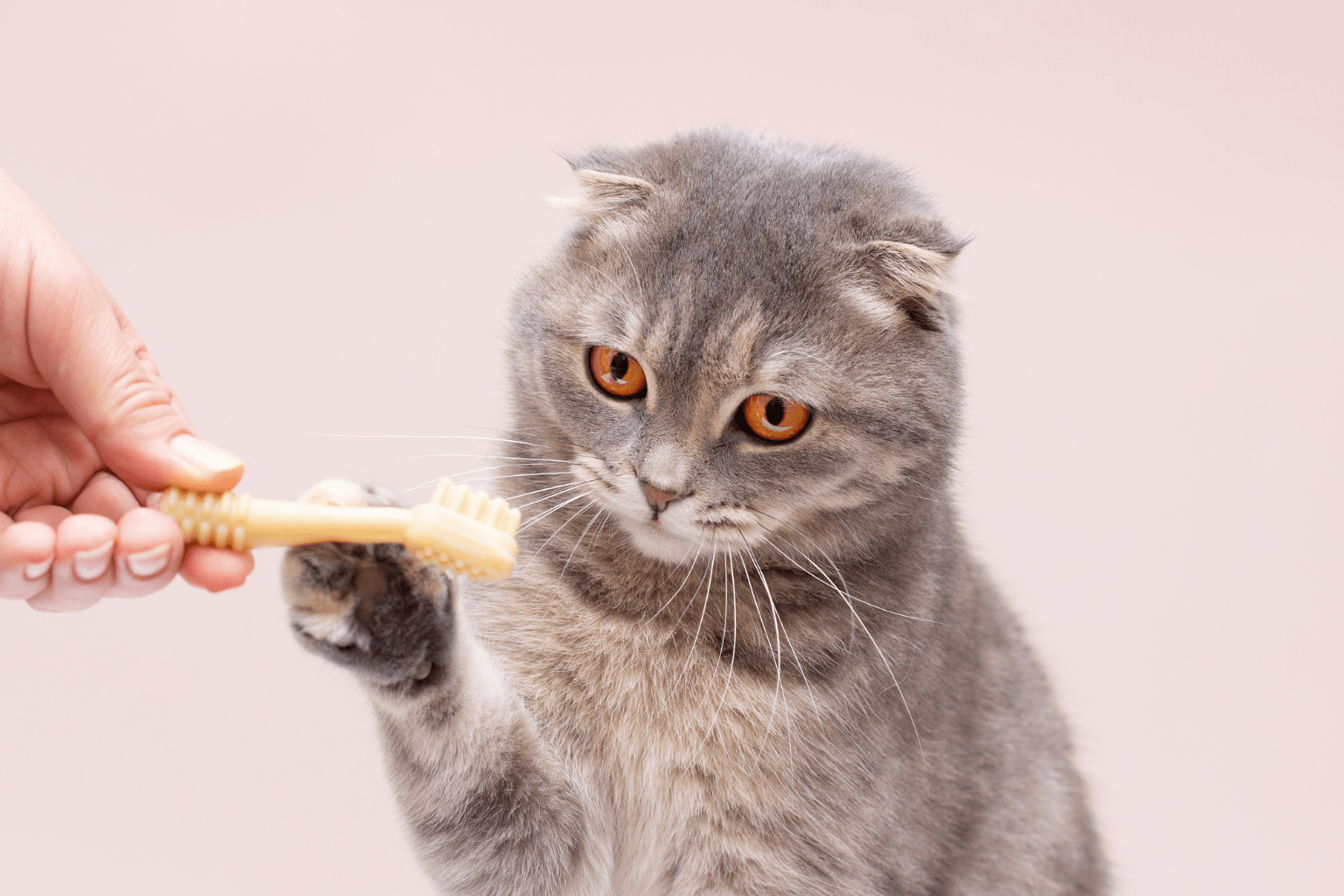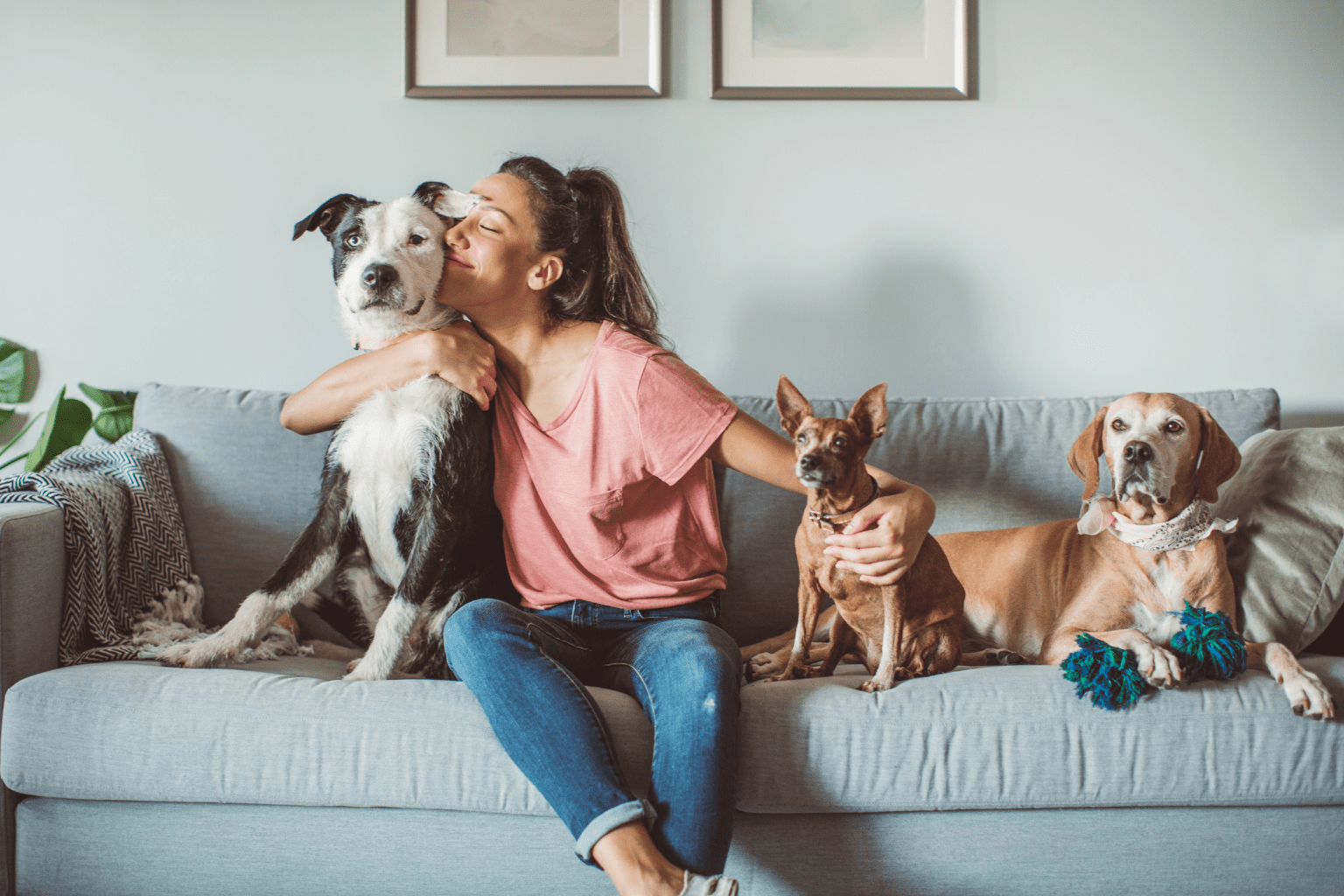Key Takeaways
- Toy dogs are small in size but have big personalities that can dominate a household.
- A typical toy dog, like a Chihuahua, can weigh as little as four pounds.
- These pint-sized companions bring immense emotional value despite their tiny stature.
- The guide focuses on natural wellness and real-life care for toy dogs.
Table of Contents
- The Ultimate Guide to Toy Dogs: Natural Wellness, Real-Life Care & Heartfelt Advice
- What Is a Toy Dog? (And Why Are They So Special?)
- The Joys and Challenges of Toy Dog Temperament
- How to Pick the Perfect Toy Breed for Your Life
- Essential Daily Care for Toy Dogs, Wellness from Nose to Tail
- Natural, Gentle Support for Toy Dog Health
- Training and Socializing Your Toy Dog, The Gentle Way
- Toy Dog Breeds, What Sets Each Apart? [Quick Profiles & Tables]
- Side-by-Side Breed Comparisons, Find the Best Fit
The Ultimate Guide to Toy Dogs: Natural Wellness, Real-Life Care & Heartfelt Advice
Picture this: a four-pound Chihuahua commanding an entire household with nothing but personality and a pair of sparkling eyes. That's the magic of toy dogs, these pint-sized companions pack enormous hearts into bodies that weigh less than your laptop bag.
Toy dogs are officially defined as breeds standing 6-13 inches tall and weighing 2-18 pounds, but their impact on our lives is immeasurably larger. From busy city apartments to multigenerational family homes, these intelligent, affectionate breeds have mastered the art of being the perfect companion without taking up much space on the couch.
What sets toy breeds apart isn't just their size, it's their remarkable ability to form deep bonds while adapting to nearly any lifestyle. Whether you're a first-time pet parent or welcoming your fifth furry family member, understanding how to nurture these delicate yet spirited dogs with gentle, natural care makes all the difference in their long, happy lives. For toy dogs prone to digestive issues, the Dog Constipation & Scooting Relief Bundle can be a helpful addition to your care routine.
What Is a Toy Dog? (And Why Are They So Special?)

The American Kennel Club's toy group represents the ultimate in canine companionship, breeds specifically developed to be loving, portable friends rather than working animals. These dogs typically weigh between 2-18 pounds and stand 6-13 inches at the shoulder, but their "toy" classification goes far beyond measurements.
Unlike their larger cousins bred for hunting, herding, or guarding, toy breeds were cultivated for one primary purpose: being exceptional companions. This heritage shows in their intuitive ability to read human emotions, their preference for staying close to their families, and their remarkable adaptability to indoor living.
For those interested in keeping their toy dogs active indoors, especially during inclement weather or in small spaces, you might find these tips on how to exercise dogs indoors particularly useful.
| Characteristic | Toy Dogs | Small Non-Toy Breeds |
|---|---|---|
| Weight Range | 2-18 pounds | 15-35 pounds |
| Primary Role | Companion | Working/Sporting |
| Exercise Needs | Moderate (20-30 min daily) | High (60+ min daily) |
| Living Space | Apartment-friendly | Needs yard access |
| Temperament | Affectionate, alert | Independent, task-focused |
The magic of toy dog breeds lies in their "big dog personality in a small package" reality. A six-pound Papillon displays the same confidence and intelligence as a sixty-pound Golden Retriever, while a Maltese shows protective instincts that would make a German Shepherd proud. This combination of portability and personality explains why toy breeds consistently rank among America's most popular companions for apartment dwellers, busy professionals, and active seniors seeking loyal, manageable pets.
The Joys and Challenges of Toy Dog Temperament
Toy dogs possess remarkably complex personalities that often surprise new owners. These breeds typically display intense loyalty, high intelligence, and surprising confidence, traits that create both delightful companionship and unique training challenges.
Most toy breeds are naturally social and thrive on human interaction, but this attachment can manifest as separation anxiety when left alone for extended periods. Their alert nature makes them excellent watchdogs, though this same vigilance often translates to more frequent barking than larger, calmer breeds.
Common Toy Dog Personality Traits
- Velcro Dogs: Prefer staying within sight of their humans
- Vocal Communicators: Use barking to express excitement, alertness, and needs
- Confident Explorers: Often unaware of their small size around larger dogs
- Quick Learners: Highly trainable with positive reinforcement methods
The key to managing toy dog temperament lies in understanding their need for gentle structure and consistent socialization. Many families find success with natural calming support, for instance, Bailey, a rescue Yorkie mix, showed noticeable improvement in separation anxiety within two weeks of starting our Pet Relax formula alongside behavioral training. The combination of natural wellness support and patient, positive training helps these sensitive dogs develop into well-adjusted, confident companions who bring joy rather than stress to daily life.
How to Pick the Perfect Toy Breed for Your Life
Selecting the right toy breed requires honest assessment of your lifestyle, living situation, and experience level. Each breed within the toy group offers distinct characteristics that align better with certain family dynamics and daily routines.
For apartment living and first-time owners: Cavalier King Charles Spaniels and Maltese breeds offer gentle temperaments with moderate exercise needs. For active seniors seeking companionship: Papillons and Toy Poodles provide intelligence and adaptability without overwhelming energy. For families with older children: Havanese and Shih Tzus typically show patience and playfulness that works well with respectful kids.
Essential Questions Before Choosing Your Toy Breed
- How much daily grooming can you realistically manage?
- Do you need a quieter breed, or can you work with vocal tendencies?
- What's your experience level with training small, intelligent dogs?
- Are there allergies in your household requiring low-shedding breeds?
- How many hours daily will your dog be alone?
Consider "Wellness Wendy," a working professional who chose a Maltese for its hypoallergenic coat and moderate exercise needs, allowing daily walks before work and weekend adventures without overwhelming her schedule. If you're looking for ways to keep your new puppy entertained, check out these best puppy dog toys for inspiration.
Essential Daily Care for Toy Dogs, Wellness from Nose to Tail

Toy dogs require modified care routines that account for their delicate size and unique nutritional needs. Feed small, frequent meals to prevent hypoglycemia, offering three to four portions daily rather than the standard two-meal schedule used for larger breeds.
Grooming frequency varies dramatically by coat type, but most toy breeds benefit from brushing every 2-3 days to prevent matting and distribute natural oils. Use gentle tools designed for small dogs, and handle ears, paws, and faces with extra care during grooming sessions. Professional grooming every 6-8 weeks keeps coats healthy and nails properly trimmed.
Weekly Toy Dog Care Checklist:
- Monday & Thursday: Brush coat thoroughly, check ears for debris
- Daily: Monitor weight and appetite (toy dogs show illness quickly)
- Weekly: Dental care with appropriate-sized tools
- Monthly: Joint mobility assessment and nail inspection
Weight monitoring becomes crucial since even one pound represents a significant percentage of a toy dog's total body weight. Annual joint checkups help catch early signs of luxating patella or hip issues common in these breeds, allowing for proactive management rather than reactive treatment. For more information on this condition, read about what is luxating patella in dogs.
Natural, Gentle Support for Toy Dog Health
Toy dogs face specific health challenges including dental overcrowding, joint instability, and sensitive digestive systems that respond beautifully to gentle, natural support. Patellar luxation affects up to 50% of toy breeds, making proactive joint care essential rather than optional.
Homeopathic pellet remedies offer targeted support without the harsh side effects that can overwhelm tiny systems. For joint comfort, our Walk-Easy® Hip & Joint Pain Relief supports the body's natural healing processes, while our Dog Laxative & Constipation Relief helps maintain digestive balance during dietary transitions or stress periods. The key lies in consistent, gentle support rather than waiting for problems to develop.
| Health Concern | Natural Support Approach | When to Start | Expected Timeline |
|---|---|---|---|
| Joint Mobility | Walk-Easy® Hip & Joint Pain Relief | Age 3-4 years | 2-4 weeks for comfort |
| Dental Health | Dog Bad Breath & Dental Care Solution | Puppy stage | Ongoing prevention |
| Anxiety Support | Pet Relax Dog Calming Anxiety Relief | As needed | Days to weeks |
| Digestive Balance | Dog Laxative & Constipation Relief | During transitions | 1-2 weeks |
Bailey, a 7-year-old Pomeranian, showed noticeable improvement in mobility within days of starting our Walk-Easy® formula, allowing him to return to his favorite morning walks with renewed enthusiasm. Administer pellets at least 20 minutes from food for optimal absorption, following package directions for your dog's specific weight range.
Dental health is another important aspect of toy dog care. Learn more about how dogs can get gum disease and what you can do to prevent it.
Training and Socializing Your Toy Dog, The Gentle Way
Early socialization prevents the overprotective tendencies that can develop when toy dogs feel responsible for guarding their families. Expose your puppy to various sounds, textures, and gentle handling during their critical socialization period (8-16 weeks) to build confidence rather than fear.
Keep training sessions short and positive, utilizing five-minute command sessions that match toy dogs' attention spans. Pocket treats work perfectly for recall training during walks, and setting a goal to "meet two new friends" weekly helps build social confidence without overwhelming your small companion.
For dogs showing signs of stress or overstimulation during training, our Pet Relax formula can provide gentle support to help them stay focused and calm. Many pet parents find that combining natural calming support with consistent, positive training creates the ideal environment for toy dogs to learn and thrive.
For additional guidance on general dog care, the ASPCA's general dog care guide is a trusted resource.
Toy Dog Breeds, What Sets Each Apart? [Quick Profiles & Tables]

| Breed | Height/Weight | Average Lifespan | Key Temperament | Coat Care Rating |
|---|---|---|---|---|
| Chihuahua | 5-8 inches / 2-6 lbs | 14-16 years | Bold, loyal, alert | Low |
| Yorkshire Terrier | 7-8 inches / 4-7 lbs | 13-16 years | Confident, courageous, feisty | High |
| Maltese | 7-9 inches / 4-7 lbs | 12-15 years | Gentle, playful, charming | High |
| Pomeranian | 6-7 inches / 3-7 lbs | 12-16 years | Vivacious, extroverted, intelligent | High |
| Shih Tzu | 9-11 inches / 9-16 lbs | 10-18 years | Outgoing, happy, affectionate | High |
| Toy Poodle | 8-10 inches / 4-6 lbs | 12-15 years | Intelligent, active, trainable | High |
| Papillon | 8-11 inches / 5-10 lbs | 14-16 years | Friendly, alert, happy | Medium |
| Cavalier King Charles | 12-13 inches / 13-18 lbs | 12-15 years | Gracious, gentle, friendly | Medium |
Chihuahua: The smallest dog breed packs enormous personality into their tiny frame. These fearless companions bond intensely with their families and make excellent apartment dogs. Their short coat requires minimal grooming, but they need consistent socialization to prevent overprotectiveness. Chihuahuas thrive in warm climates and may need sweaters in cold weather.
Yorkshire Terrier: Originally bred to catch rats in textile mills, Yorkies retain their terrier spirit in a silk-coated package. Their gorgeous blue and tan coat requires daily brushing and professional grooming every 6-8 weeks. These brave little dogs adapt well to city living but need mental stimulation to prevent boredom.
Maltese: Ancient Mediterranean royalty favored these white-coated charmers, and modern families understand why. Maltese dogs are naturally gentle with children and other pets, making them ideal family companions. Their floor-length coat requires daily brushing, though many owners opt for a shorter "puppy cut" for easier maintenance.
Pomeranian: These fluffy extroverts descended from Arctic sled dogs but prefer being the center of attention to pulling sleds. Pomeranians are naturally curious and make excellent watchdogs, alerting families to visitors. Their double coat sheds seasonally and needs regular brushing to prevent matting.
Shih Tzu: Bred exclusively as companion dogs for Chinese royalty, Shih Tzus excel at their original job. These happy-go-lucky dogs get along with everyone and rarely show aggression. Their flowing coat can be kept long for show or trimmed short for practicality, but daily brushing prevents tangles either way.
Toy Poodle: The smallest poodle variety combines intelligence with athleticism in a hypoallergenic package. These quick learners excel at obedience training and dog sports. Their curly coat doesn't shed but requires professional grooming every 4-6 weeks to maintain the classic poodle look.
Papillon: Named for their butterfly-like ears, Papillons are surprisingly athletic for toy dogs. They excel at agility and obedience competitions while remaining gentle family pets. Their silky coat needs regular brushing but is easier to maintain than many toy breeds.
Cavalier King Charles Spaniel: These gentle spaniels bridge the gap between toy and small breeds with their friendly temperament. Cavaliers are naturally good with children and other pets, making them excellent family dogs. Their silky coat requires regular brushing and occasional trimming around the ears and feet.
For more information on selecting the right breed, the AVMA's guide to selecting toy dog breeds offers helpful insights.
Side-by-Side Breed Comparisons, Find the Best Fit
Chihuahua vs. Pomeranian
| Criteria | Chihuahua | Pomeranian |
|---|---|---|
| Shedding | Minimal to moderate | Heavy seasonal shedding |
| Energy Level | Moderate, bursts of activity | High, needs daily stimulation |
| Trainability | Moderate, can be stubborn | Good, eager to please |
| Health Risks | Heart issues, luxating patella | Luxating patella, tracheal collapse |
| Apartment Fit | Excellent | Very good |
Best Choice For: Chihuahuas suit first-time toy dog owners who want lower grooming needs. Pomeranians fit active families who enjoy daily brushing sessions.
Maltese vs. Shih Tzu
| Criteria | Maltese | Shih Tzu |
|---|---|---|
| Size | 4-7 lbs | 9-16 lbs |
| Exercise Needs | Low to moderate | Moderate |
| With Children | Better with older kids | Excellent with all ages |
| Grooming | Daily brushing required | Daily brushing required |
| Barking Tendency | Moderate | Low to moderate |
Best Choice For: Maltese dogs work well for adults seeking a delicate, elegant companion. Shih Tzus are ideal for families with children who want a sturdier toy breed.
Frequently Asked Questions
What are the defining characteristics that make toy dogs unique compared to other dog breeds?
Toy dogs are uniquely small, typically weighing between 2 to 18 pounds and standing 6 to 13 inches tall, but their size doesn’t limit their big personalities. They form deep emotional bonds, adapt well to various living spaces, and often act as affectionate, lively companions that can command a household despite their pint-sized stature.
How can I provide natural wellness and gentle care tailored specifically for the delicate size of toy dogs?
Supporting toy dogs’ wellness means focusing on gentle, natural care that respects their small size, think daily routines that include balanced nutrition, regular but mild exercise, and natural remedies that support their body’s own healing without harsh chemicals. Using homeopathic pellets designed for small dogs can help maintain comfort and vitality safely and effectively.
What are some effective methods for training and socializing toy dogs in a gentle and positive way?
Training toy dogs works best with patience, consistency, and positive reinforcement, using treats, praise, and gentle guidance rather than force. Early socialization with people and other pets helps them build confidence and reduces anxiety, making their big personalities shine in a calm, well-adjusted way.
Which toy dog breeds are best suited for different living environments and lifestyles?
Toy breeds vary in energy and temperament, so choosing one depends on your lifestyle and space. For apartment living, calm breeds that enjoy cuddling fit well, while more active toy dogs thrive with owners who can provide regular playtime and mental stimulation. Understanding each breed’s unique traits helps match your home and routine for a happy, balanced companion.



